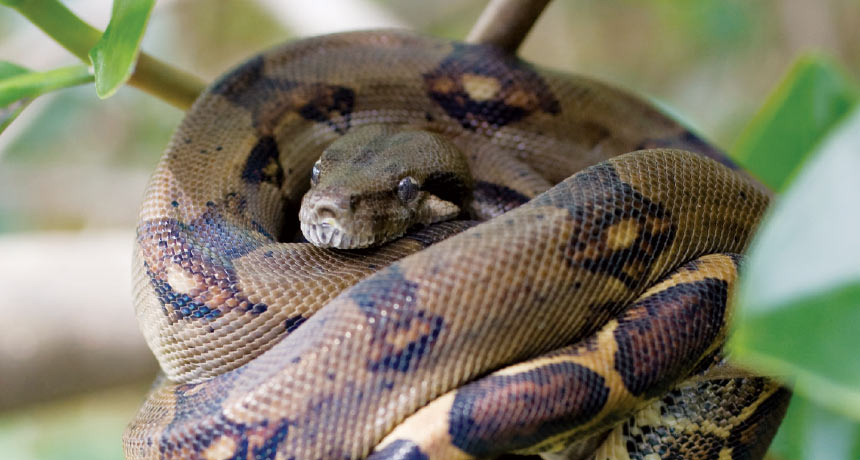
ashei, first named only in 2007, reaches nine feet in length, has been seen eating five-foot-long puff adders (another deadly venomous snake) and, like all the spitting cobras, can also inject venom by biting. Ashe’s spitting cobra is the largest of the dozen or so spitting cobra species, which live in Africa and Asia. And since the venom is harmless to intact skin, the mean evolutionary tactic behind this nasty habit seems to be, precisely, to hit the victim in the eye, which can cause permanent blindness. Well, the spitting cobra doesn’t just spit it spits venom. And you thought camels were nasty for spitting in strangers’ faces (they’re actually belching up their cud).

The prize was never collected.Īshe’s spitting cobra ( Naja ashei). Worthy to note when discussing the biggest snakes is that between 19, the New York-based Wildlife Conservation Society offered a $50,000 reward to anyone who could produce a 30-foot snake. Forty-nine feet? Anyway, read Aglionby’s article, which explains the difficulty in measuring large, coiled-up snakes. Why should we believe an English journalist and not the keeper of the snake, you ask? Come on. Only when journalist John Aglionby of The Guardian made a trip to see and measure the creature, being kept in a cage in a village in Java, was its real size revealed: 23 feet. In 2003, one snake was reported to be 49 feet long and weigh more than 900 pounds. I’ll stick with my yellow Lab.) Recently, a 25-footer weighing 350 pounds was named the largest snake in captivity-but just how big the largest “retic” ever to have lived might never be known. Probably the longest snake in the world (if not the heaviest), the reticulated python of Southeast Asia is also an occasional man-eater and a popular pet. Reticulated python ( Python reticulatus). Photo courtesy of Flickr user Orbital Joe. This Burmese python has mostly downed a rat. Now, whether you love them or hate them, here are a few iconic species to watch for when traveling, from those wickedly venomous to those worth learning more about before you cast your judgment.Įating rodents is a job someone on this earth has to do, and we should be glad it’s not us. Forgive them, Mother Nature, for they know not what they do. Stories of such creatures can leave indelible impressions on the tender minds of men-so indelible that no matter how plain and obvious it is that the harmless gopher snake-or king snake, or rat snake-is a peaceful friend of society that wants little more than to eat a rat (a job that somebody’s got to do, and how grateful we should be that snakes have volunteered), many people still call snake control and removal experts when one appears on their property. As locals say, this snake delivers the “kiss of death.” In other words, nobody-that’s nobody-on a trek in the wilderness of tropical Africa, hours from the nearest doctor and without antivenin, survives the bite of the black mamba. And in Africa, the black mamba (Dendroaspis polylepis) seems so wicked it’s absurd: It is the fastest snake in the world and can slither more swiftly than the average city cyclist pedals to work it is the second-longest venomous snake, growing to 14 feet it may strike a single victim repeatedly like a psycho with a butcher knife its venom is so potent it can kill a horse-and a person in just 30 minutes and, in bite victims who go untreated, the mortality rate is-get this-100 percent. asper, goes by the same common names and is comparably devastating and said to be so aggressive it will chase people, bent on sharing some of its powerful venom. Throughout the New World tropics, roughly 2,000 people die every year from the bite of the pit viper ( B othrops atrox), known also as the fer-de-lance. Indeed, it might take a very persuasive herpetologist on field sabbatical in Ecuador to convince the locals that the pit viper of his thesis focus is anything but a device of the devil. It’s easy to see why, if we just take a glance at the scariest of the lot-the venomous snakes. But mostly, these reptiles have been cast in the role of evil.

As we can see, snakes bring both good and bad to the world we share with them.

Where would we be without snakes? Rodent populations might boom, the native bird assemblage of Guam would probably remain mostly intact today and 100,000 people every year would not die of venomous bites. Photo courtesy of Flickr user Global Herper.

The “retic” has killed humans before but is arguably more beautiful than it is dangerous. The reticulated python of Southeast Asia is among the world’s two largest snake species (the green anaconda is equally bulky).


 0 kommentar(er)
0 kommentar(er)
